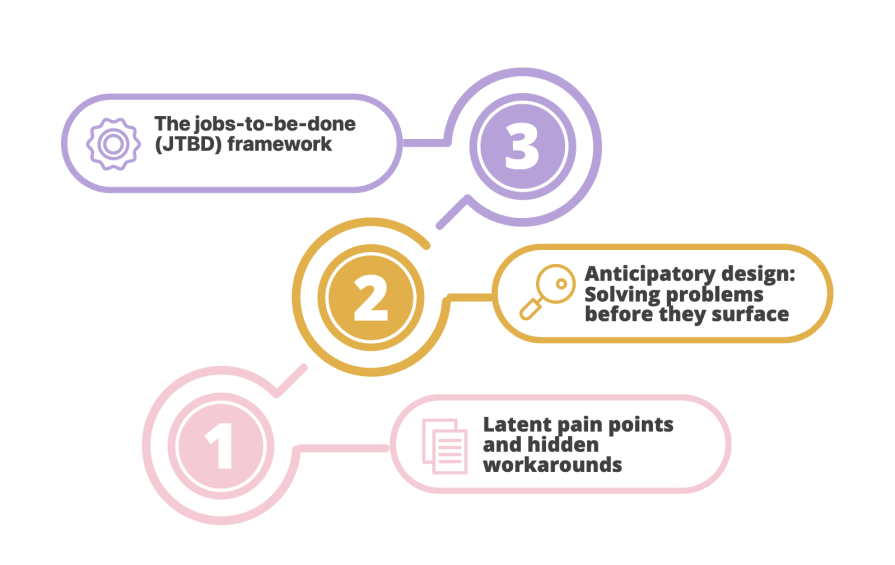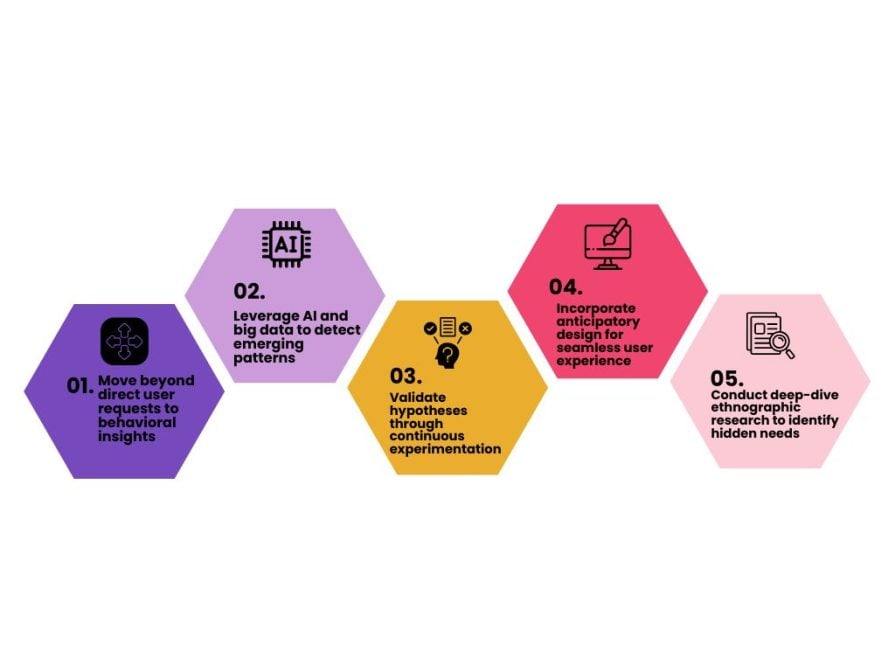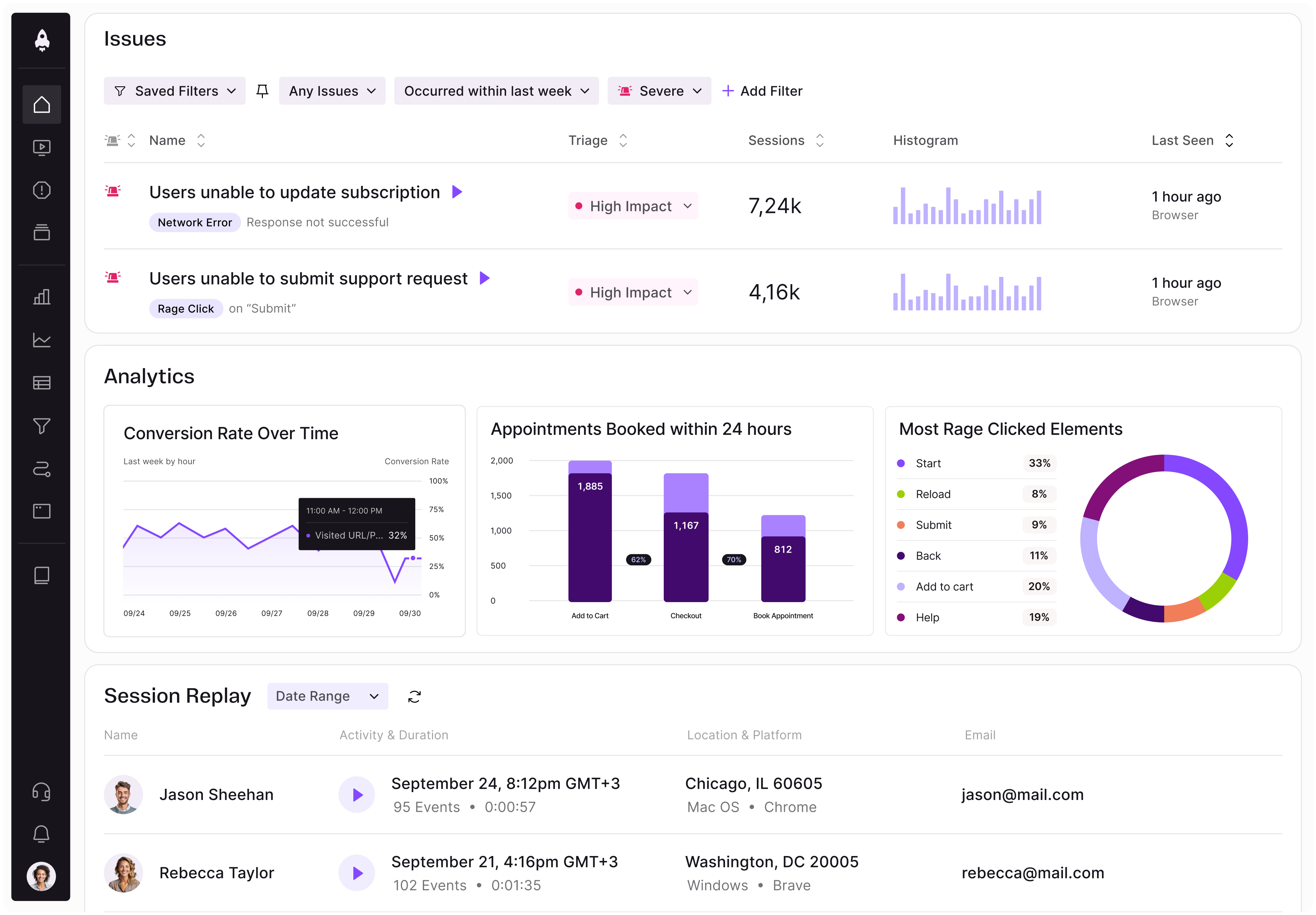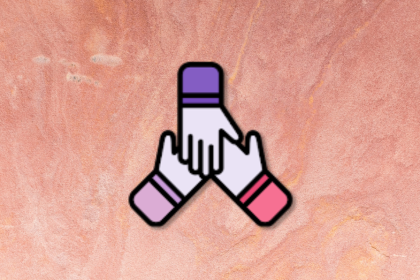Product managers (PMs) often rely on direct user feedback to guide product development. While this approach leads to valuable incremental improvements, it may overlook opportunities for groundbreaking innovations that address unarticulated user needs.

Users frequently cannot express their deepest pain points simply because they’re unaware of potential solutions. To that end, this article explores strategies to identify and design for these “invisible” user pain points, enabling you to create transformative products and maximize market impact.
Conventional user experience (UX) research methods, such as surveys, interviews, and focus groups, rely heavily on users’ ability to articulate their needs and preferences.
However, the Journal of Consumer Research highlights that only 20 percent of consumers can accurately predict which product features they’ll find most valuable in the future.
This finding underscores the limitations of traditional market research methods that rely solely on stated consumer preferences, rather than observing actual behaviors and contextual decision-making.
Alongside this, a 2016 report from the Harvard Business Review found that companies who rely exclusively on user feedback for innovation tend to experience 44 percent lower revenue growth rates compared to those that integrate behavioral insights and predictive analytics into their product development strategy.
The report suggests that while customer feedback is valuable, it’s often reactive and incomplete. Companies that outperform in innovation are those that proactively analyze behavioral trends, anticipate unmet needs, and design solutions before users even realize they want them.
These statistics highlight the well-documented discrepancy between what users claim to experience and what their actual interactions reveal. Observational methods, such as usability testing, heatmaps, and behavioral tracking, consistently outperform direct user reports in uncovering pain points, leading to more effective product design improvements.
This section details famous examples of companies who defined innovation instead of just iterating based on user requests.
Before the iPhone, most mobile users were accustomed to physical keyboards and styluses. In 2006, BlackBerry dominated the market with nine million users worldwide. The idea of a fully touchscreen phone seemed impractical.
However, Apple recognized the need for a more intuitive interface. As of 2023, iPhone sales exceed 2.2 billion units, demonstrating the power of designing for invisible pain points.
Long commutes and driver fatigue are global issues. According to the National Highway Traffic Safety Administration (NHTSA), drowsy driving causes 91,000 crashes annually in the U.S.
Tesla’s Autopilot, launched in 2014, wasn’t developed in response to user surveys but through behavioral insights. By 2022, the adoption rate for Autopilot surged to 89 percent, showing how addressing unseen pain points can drive mass adoption.
The inconvenience of repeatedly entering payment details wasn’t a commonly voiced complaint. However, a study by the Baymard Institute (2021) found that 18 percent of cart abandonments result from a lengthy checkout process.
Amazon’s 1-Click Checkout, patented in 1999, led to a five percent increase in conversion rates, which translated to billions in additional revenue.
Apple’s controversial decision to remove the headphone jack from the iPhone in 2016 sparked criticism. And yet, AirPods became one of Apple’s fastest-selling products, with over 150 million units sold in 2022. Users quickly adapted to the wireless convenience, revealing an unspoken need for seamless connectivity.
To help you identify potential latent pain points, try implementing these behavioral models with your product team:

Many users create workarounds for inefficiencies, making them less likely to report these issues. Examples include:
Anticipatory design leverages AI and machine learning to predict and address user needs before they become apparent.
JTBD shifts the focus from what users request to what they’re trying to accomplish. Instead of adding minor improvements, you should ask:
Besides behavioral models, you can also leverage these tools to help uncover hidden user needs.
Needmining leverages machine learning to analyze vast amounts of user-generated content. Research published in Decision Support Systems (2022) demonstrated that needmining algorithms in ecommerce forums identified 74 percent of latent customer concerns before companies recognized them.
Painsight is an unsupervised learning model that scans online reviews and extracts dissatisfaction factors. When applied to 20,000 customer reviews across industries, it successfully identified over 4,500 pain points previously unaddressed.
Heatmap and behavioral analytics tools reveal areas of user frustration in digital products:
With models and tools out of the way, you can implement these strategies through the following best practices:

User surveys and interviews provide valuable input, but they often capture only explicit and surface-level feedback. The real breakthroughs come from understanding user behavior at a deeper level. You can do this by:
Hidden pain points often emerge before they become mainstream issues. Companies that proactively analyze data can address these issues before competitors even recognize them. Get started by:
Rather than waiting for direct user requests, proactively test ideas through controlled experiments such as:
Anticipatory design removes friction before users even recognize it as an issue. The goal is to create intuitive experiences that require minimal cognitive effort by:
Users may not always be able to articulate their biggest challenges, but their daily interactions provide valuable clues. Observing users in real-world environments helps uncover unspoken pain points. To get started, try:
As technology advances, your role will shift from responding to feedback to proactively identifying invisible needs. PMs that successfully address hidden pain points will set the standard for innovation.
By integrating AI-driven insights, behavioral psychology frameworks, and predictive analytics, you can design game-changing products that redefine industries. The most successful innovations don’t emerge from what users say they want, but from what they don’t realize they need.
Featured image source: IconScout

LogRocket identifies friction points in the user experience so you can make informed decisions about product and design changes that must happen to hit your goals.
With LogRocket, you can understand the scope of the issues affecting your product and prioritize the changes that need to be made. LogRocket simplifies workflows by allowing Engineering, Product, UX, and Design teams to work from the same data as you, eliminating any confusion about what needs to be done.
Get your teams on the same page — try LogRocket today.

A practical guide for PMs who want to stop being bottlenecks, delegate smarter, and lead teams effectively with a clear ownership framework.

Stop letting unreliable data block features. Treat data as inventory to track quality, ownership, and ship with confidence.

Learn why slide decks slow teams down and explore better tools like whiteboards, PRDs, and prototypes to improve collaboration and alignment.

AI PM roles are evolving fast. Learn the five types of AI PMs, the skills they need, and how they shape AI products across industries.
2 Replies to "A guide to building product features users don’t know to ask for"
This essay emphasizes an important product development feature that’s often missed! Direct customer feedback is essential, but understanding unarticulated needs might reveal unique solutions users didn’t realize they needed. Your statistics on consumers’ inability to forecast future requirements emphasize the relevance of behavioral insights and user interactions. Finding the correct balance between users’ words and actions is key. Using observational methodologies will improve the design process and create more meaningful solutions that solve real problems. Excited to see how PMs use these strategies for breakthrough inventions!
This is such a valuable guide! Building features users don’t know to ask for is where true innovation happens. It’s all about understanding real needs before they’re even voiced. Great read!